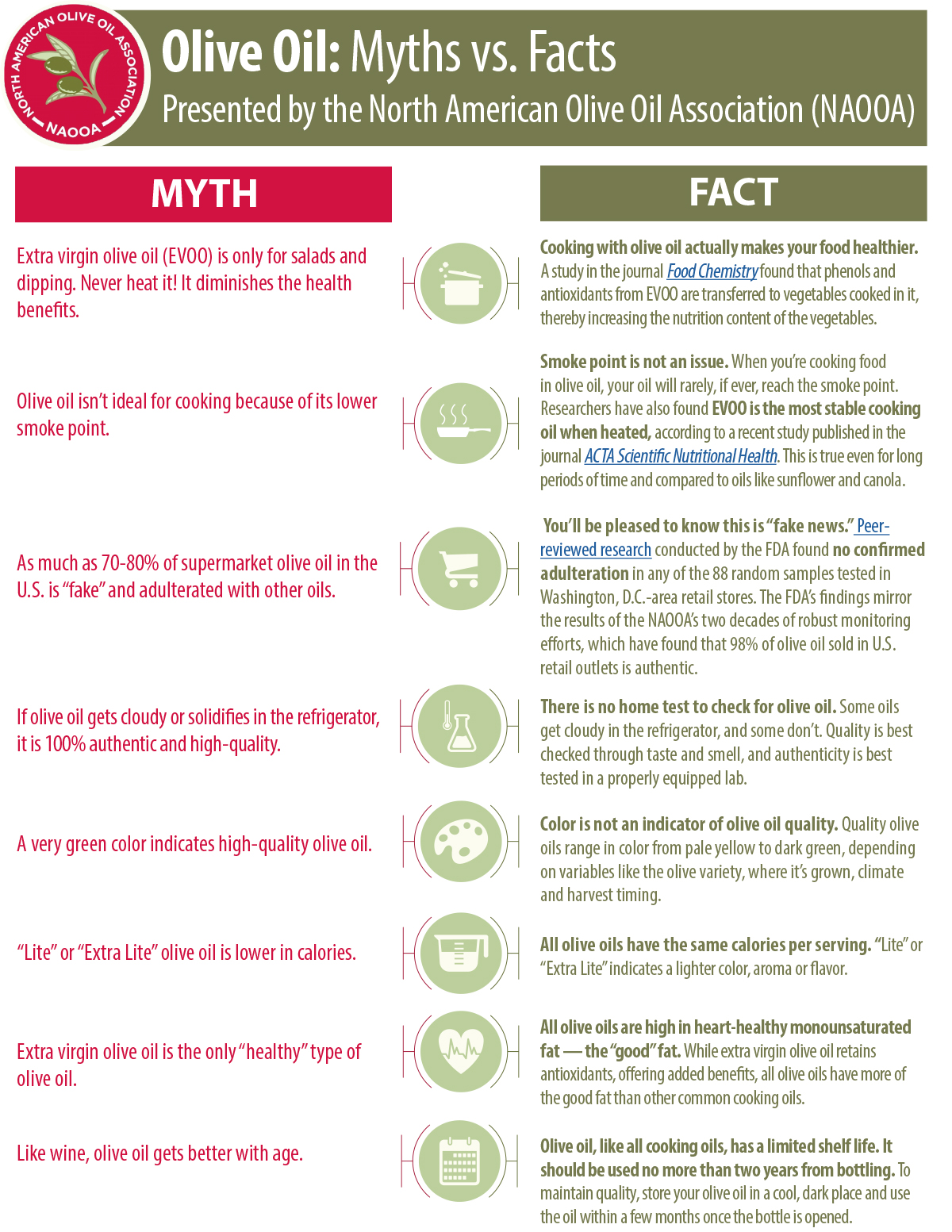Some of olive oil’s most unique benefits compared to commonly-used cooking oils are the antioxidant and anti-inflammatory effects provided from Vitamins E and A and the phenols found in olive oils. Phenols are natural antioxidants that benefit the immune system, capture free radicals, and prevent oxidation and the formation of peroxides. They are also known to have anti-inflammatory power which helps prevent chronic inflammation that can lead to cardiovascular disease, diabetes and cancer.
Other conditions associated with chronic inflammation include rheumatoid arthritis, inflammatory bowel disease, and osteoporosis. Alzheimer’s disease results from inflammation of the brain and a recent analysis of a 2009 study showed that participants that more closely followed a Mediterranean Diet including olive oil had a 40 percent lower risk of Alzheimer’s than those with the lowest adherence to the diet[1].
The most important phenols in olive oil include oleuropein, tyrosol, and hydroxytyrosol. Phenols also provide antiviral and antibacterial benefits. In addition to the healthful properties, these compounds increase the bitterness in extra virgin olive oils and also increase the stability of the oil over time and when used in cooking.
Because virgin olive oils are produced without added heat or chemicals, they retain natural vitamins and antioxidants found in the olives. Non-virgin olive oils contain varying amounts of phenols depending on how much virgin olive oil is blended in the final product. As the top quality and grade, extra virgin olive oils contain the highest amounts of phenols. You can get an indication of an oil’s phenol level by tasting it - higher phenol oils typically taste more bitter and are more pungent in the throat.
Just remember olive oil is one piece of the puzzle – to get the most benefits, olive oils should replace other fats and be consumed in conjunction with a healthy diet and moderate exercise.
[1] Scarmeas N et al. Physical activity, diet and risk of Alzheimer’s disease. JAMA 2009;302 (6):627–637.





